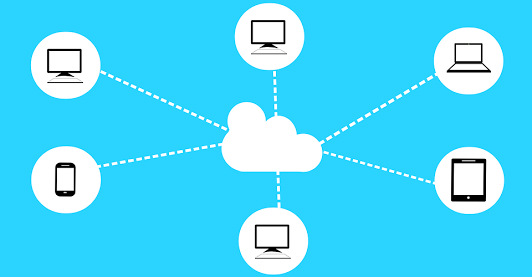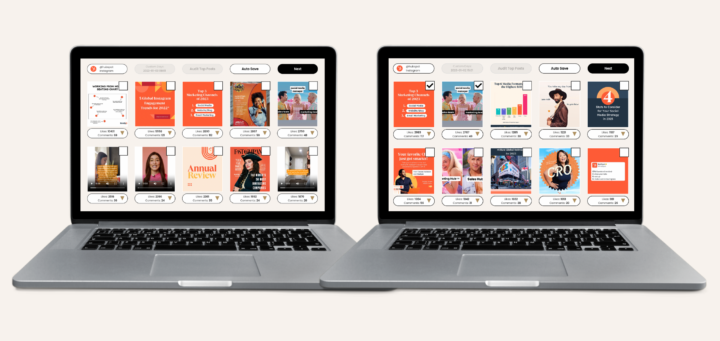acronym [ak-ruh-nim]: a word formed from the initial letters or groups of letters of words in a set phrase or series of words and pronounced as a separate word.

1. Monthly Unique Visitors
As a SaaS company, you likely have a customer login link on your website, which means that a lot of your traffic can be attributed to customers returning to your site to login to their account. While it’s great that your current customers are using your website like they are supposed to, their visits contribute to your overall site traffic, which can skew results. While current customers are obviously great, SaaS companies rely on new visitors who will potentially convert into new customers as well.
As a marketer, it’s important to set up analytics to track the difference between returning visitors who are already customers, and new, unique visitors, especially by source. Measuring by source will allow you to track the success of each of your marketing campaigns, and accurately track your unique traffic growth each month.
2. MQLs vs. SQLs
3. Churn Rates
Consistently being able to close new customers is the goal of any SaaS company, but keeping those customers is the backbone. Churn is a calculation of the percentage of customers who leave your business on a monthly basis, and is arguably one of the most important metrics that you should be tracking. The logic behind it is pretty simple: if you want to grow your business, you need to be able to acquire new customers and keep the ones you already have.
Not only will monthly reporting of your churn rate help you to more accurately forecast revenues and cashflows, but it can also help you understand why customers aren’t renewing: maybe there are UX issues with your product that need to be addressed, or bugs that need to be fixed.
Implementing a feedback process will help you better understand your churn rate and act towards improving it. For example, you can reach out to customers directly, or have them complete a customer satisfaction survey at the end of each renewal term.
4. Customer Acquisition Cost (CAC)
Customer acquisition cost (CAC) measures the total expense that a company must incur to acquire each new customer, and how long it will take the company to recoup that investment. This metric is very useful in that it can help managers decide if they have the spend capacity to ramp up sales and marketing efforts, or if they need to scale back.
Simply put, CAC can be calculated by taking the total costs of acquisition and dividing it by the total new customers acquired in a given period. For example:
Total Sales & Marketing Spend for 2016: $100,000
Total Customers Acquired in 2016: 250
Average CAC (Cost per Customer) for 2016: $400
This calculation may differ based on your sales cycle and how long it typically takes to close a deal. If, on average, it takes 3 months to close each new customer, then you may choose to divide the total customers acquired in one quarter against the total sales and marketing spend for the prior quarter. What’s important here is being able to accurately calculate just how many inputs are required to earn one customer, which will help businesses understand what is required to be successful.
5. Customer Lifetime Value (CLV)
Customer lifetime value (CLV) is the average amount a customer will spend during their time with your company and the calculation of it involves a few steps:
- Calculate Customer Lifetime Rate by dividing 1 by your churn rate. So for example, if your monthly churn is 2%, then your customer lifetime rate is 50 (1/0.02 = 50).
- Calculate Average Revenue per Account (ARPA) by dividing the total revenue earned in a period by the total number of active customers in that same period. For example, if your total revenue was $200,000 and your customer count was 250, your ARPA would be $800 ($200,000/250 = $800).
- Calculate CLV by multiplying your customer lifetime rate by your ARPA. In this example, your CLV would total $40,000 (50 x $800 = $40,000).
CLV calculates what your average customer is worth and is an extremely valuable KPI in the modeling and forecasting of your business. It’s also required for you to calculate your CLV-to-CAC ratio, which shows you the lifetime value of your average customer, and the average cost you spent to acquire them. In our CAC and CLV calculations above, the example company spends an average of $400 to acquire each new customer, and in turn generates $40,000 in lifetime revenue…which is a pretty hefty ROI! Typically, most SaaS companies should aim for a 3:1 ratio for (ie: CLV is 3 times higher than CAC) as a sign of company health and profitability.
Summary
What all of these acronyms lack in letters, they make up for in importance! These 5 key metrics are relevant not only to SaaS businesses but other industries as well and will only be useful if they are monitored and reported on on a consistent basis. To further help you with the tracking and reporting of these analytics and more useful website traffic and source data, check out our guide to Google Analytics.


